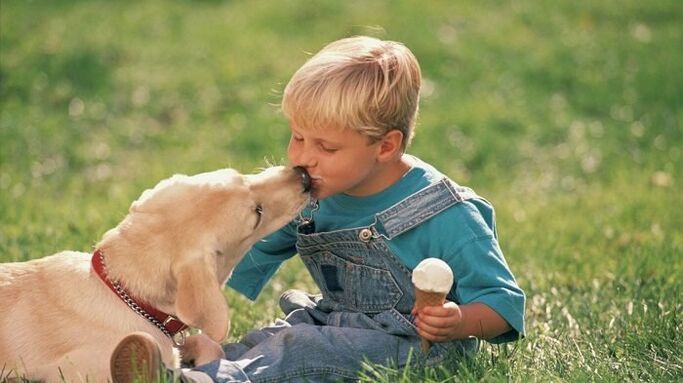
Infection with helminths is one of the most common childhood diseases. According to official statistics, more than 20 million people are affected by helminthic infection, 80% of whom are children. The symptoms of the presence of worms in the body are not always pronounced. Consider the main signs of infection in children with helminths, methods of treating them, and preventative measures.
Types of helminth samples
There are more than 300 types of worms. Each can be divided into three groups:
- Nematodes (dumplings, spindleworms, whipworms).
- Tapeworms (bovine tapeworm, porcine tapeworm).
- Flue worms (cat and Siberian weasel).
Most often, children have worms in the first group. Among them:
- Cormorants are long, pointed worms. The color can vary from pink to yellow. Adults parasitize in the small intestine. Cylindrical worms multiply at high speeds - the female can lay up to 240, 000 eggs a day;
- Pinworms - are round and small worms. They are usually white or yellowish in color. Females lay eggs near the anus and in the perineum. The eggs become infectious after a few hours.
- Vlasoglaves are thin front-ended round worms that can pierce the intestinal wall. At the same time, whipworms become saturated with their blood and poison other organs with their waste. The secretions are absorbed into the bloodstream and travel throughout the body.
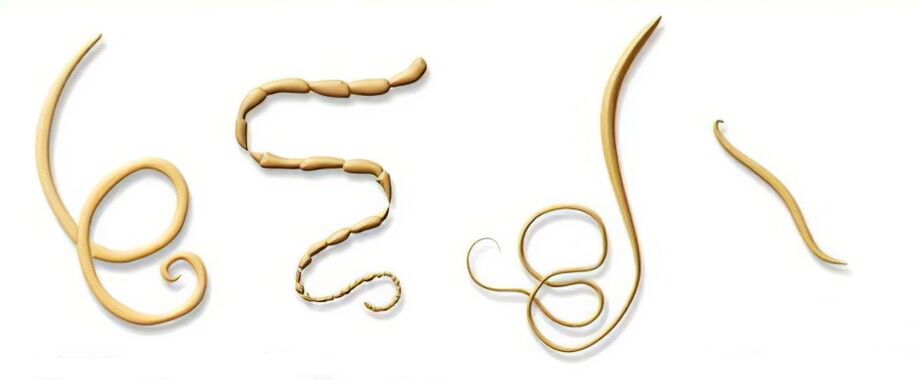
Important! Sometimes parents do not even suspect that the helminths have settled in their child’s body. In the chronic stage, the disease may be asymptomatic.
Experienced doctors say that a thorough examination can find worms even in an externally healthy child.
How children get infected
It is fundamentally wrong to believe that the infection of worms is due to inadequate care of the child. Cases of worm infection are not uncommon in the most thriving and well-groomed children. The main source of infection is dirty hands. The active child gets to know the world around him and spends a lot of time outdoors, in the garden, on the playground and in the sandpit. These are sites of significant accumulation of worm eggs. Infections from animals that children like to play with are common.
Unwashed vegetables and fruits are another danger. In particular, species whose fruit is in contact with the soil, such as strawberries, should not be eaten unwashed.
Important! You should not believe that peeled fruits (bananas, tangerines, oranges) will be completely safe. It should be washed as thoroughly as any other fruit before consumption.
You can become infected with worms by consuming fresh cow's or goat's milk. If the animal has been kept in conditions that do not meet hygiene standards, it is not surprising that parasites have settled in its milk. Another cause of worms is improperly cooked meat and fish.

Infection cannot be avoided if the child has not developed hand hygiene habits before eating and after bathing. Chewing nails, sucking fingers, biting the tip of a pen or pencil are not harmless habits at all, as it seems at first glance, as a child’s hands are not always clean enough. It is completely unacceptable for children to caress or treat stray cats or dogs.
Common symptoms
All signs of worm infection are general and specific to certain types of parasites. The presence of general intoxication in the body of children can be judged by the general manifestations of worm lesions:
- stool disorders (constipation, diarrhea);
- frequent dizziness, nausea, bad breath;
- sharp weight loss is due to the fact that parasites absorb most of the nutrients from food;
- dermatological diseases (rash, papillomas, diathesis, brittle nails);
- nervous system disorders (mood, tearing, poor sleep and chronic fatigue in the child);
- low hemoglobin levels;
- disorders of immunity leading to common viral diseases;
- low resistance to respiratory diseases (sinusitis, nasal polyps, adenoids);
- allergic reactions.

Important! Standard prophylactic vaccination may indicate the presence of parasites. If you have severe allergic reactions, you should see a parasitologist!
Signs of pinworm infection
Caring parents want to know what worms look like in a child’s stool. Usually, fungi in a vessel or near a child’s anus are only visible in advanced cases. They are usually rarely seen with the naked eye. But an attentive mother will always watch for the following symptoms:
- itching of the anus;
- abdominal pain, especially around the navel;
- salivation, nausea;
- anxiety in a child who often wakes up or is excited in his sleep;
- gnashing of teeth during sleep (no definitive medical evidence).
If a child has itching in their anus, especially at night, this will cause the parasites to get on their hands and later on the skin of the whole body. As a result, inflammatory diseases of the skin are possible. Combing the anus is also dangerous in that it contributes to re-infection with fungal worms when a child takes food, toys, or pulls it into his mouth without washing his hands.
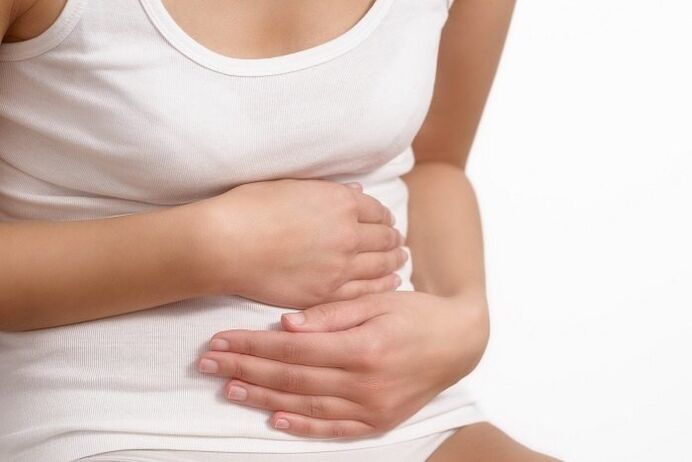
Young girls are at higher risk of fungal worms entering the external genitalia where females climb out of the anus. This infection is accompanied by urinary incontinence and heavy discharge from the genitals. Lack of proper treatment can lead to a noticeable delay in a child’s growth and physical development.
Symptoms of damage to nematodes and whipworms
Unlike dumplings, which are common in temperate climates, cylindrical worms prefer warm and humid air. Ascaris infection is suspected when a child begins to suffer from a dry cough in the absence of respiratory disease, which intensifies at night. This is due to the fact that parasites move throughout the body. Other symptoms include a rash on the body, fever, pale skin and dark circles under the eyes. With severe forms of the disease, inflammation of the gallbladder, nervous system disorders and epileptic seizures are possible.
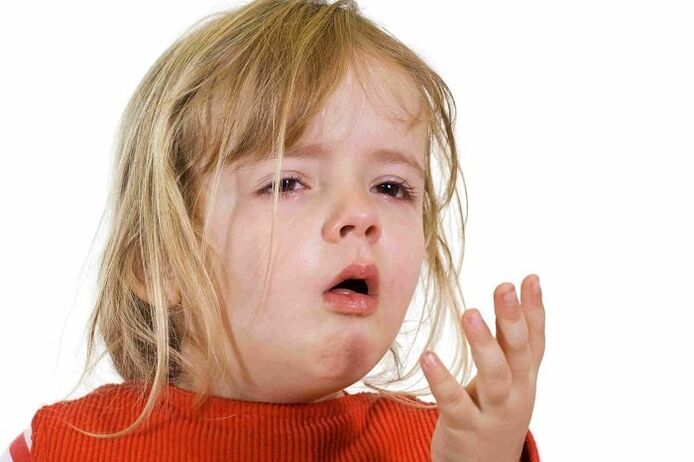
Whipworm infection is usually slow or asymptomatic, but bloody diarrhea, anemia, and delayed physical development may occur.
Diagnosis of helminthiasis
If a child is suspected of being infected, a series of tests and examinations should be performed. Diagnostic methods determine the type of parasite. The child must hand over:
- stool analysis for worm eggs - to be taken with a break of several days;
- analysis of dysbiosis - notes the difference between the E. coli index and the norm;
- general blood test to determine the level of iron in the body;
- scraping pinworms.
Important! A single analysis of the presence of helminthic samples in the stool does not detect parasites in the child’s body in many cases. Re-examination of the stool is of great importance.
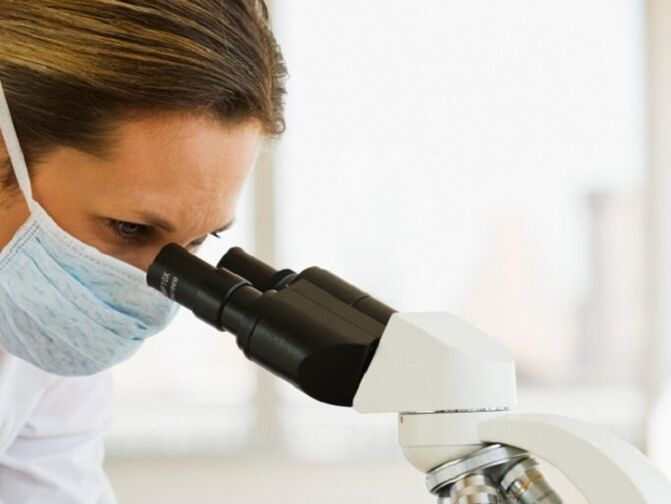
Because needles and spindle worms are rapidly killed outside the human body, fecal analysis should be performed for the presence of helminth samples as soon as possible after defecation. The dumplings should be scraped at least once a year. It is mandatory if the child goes to kindergarten, school or hospital.
Ultrasound, endoscopic examinations and computed tomography are performed to eliminate the risk of parasites entering other internal organs.
Characteristics of the disease with worms in an infant
Infection of worms usually occurs in children after 1 year. This is a period of active exploration of the world, when the baby loves to study the objects around him, to taste them. However, infections with helminths can also occur in infants. Such diseases are considered to be a very serious problem that causes enormous damage to the still vulnerable body.
One of the main causes of the disease is worm infection even in the womb. If the expectant mother herself is a carrier of worms, their larvae during pregnancy can enter the fetus through the placenta. The infection can occur when the baby passes through the mother’s birth canal. Thus, the barely born baby is already a carrier of worms.

The risk of infecting worms in babies increases when the baby starts to climb. If there are pets in the house, basic hygiene rules are not followed, it is easy for the baby to collect all sorts of bacteria and parasites in his body.
It is much more difficult to make an effective diagnosis in infancy than in a child over 1 year of age. Signs of helminthiasis in infants may include bowel movements, in girls inflammation around the anus and labia, poor appetite and weight loss, irritability and anxiety. Even if the likelihood of infection is negligible, you should show your child to a doctor and do the necessary tests.
Traditional treatments
In most cases, treatment for helminthiasis takes some time. The child should be taken to a pediatrician, parasitologist and pediatric gastroenterologist. Medication takes place in three stages: a period of detoxification of the body, an anthelmintic therapy, and a subsequent cleansing and strengthening program.
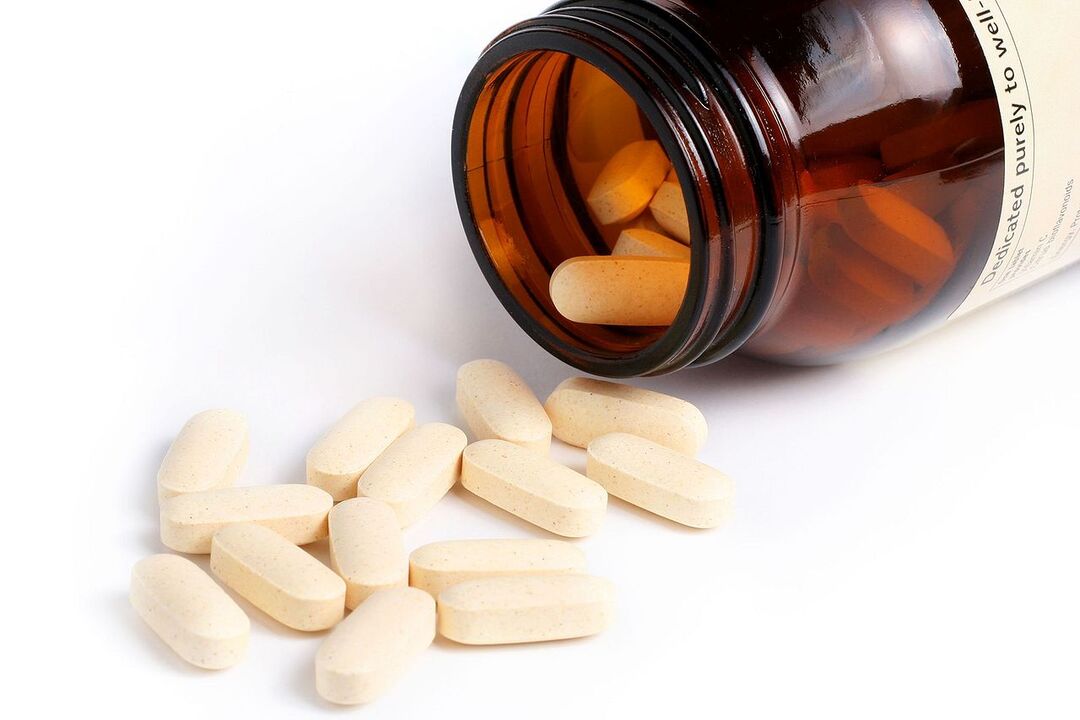
Preparations against worms
Before using antiparasitic drugs, children are prescribed sorbents for general body cleansing and antihistamines to relieve inflammation and allergies. This is followed by taking anthelmintic drugs.
Important! Anthelmintics are toxic and should only be taken as prescribed by your doctor and at the prescribed dose! Do not use strong medications for prevention!
The age of the child, the severity of the disease and the risk of side effects should be taken into account when prescribing medicines.
Tablet formulations can be given to older children who are already able to swallow tablets. It is not uncommon for a child to refuse to swallow or spit out a tablet. Do not crush or crush the tablet. You can try to give it to your child while playing or with food. For infants and one-year-olds, the drugs are more suitable in the form of a medical suspension. The antiparasitic agents work according to the following scheme: the first method kills the adult helminths and the next method prevents the larvae from maturing and multiplying.
Side effects usually indicate the death of parasites under the influence of the drug. You can use activated carbon to eliminate them. But this should be done at the earliest after 24 hours, otherwise the effect of the anthelmintic will be reduced. In some cases, complex antiparasitic courses may be prescribed that include multiple medications. Anthelmintics have a number of contraindications. It is not prescribed for children with malignancies, certain blood disorders and liver problems.
Anesthetics are prescribed to relieve severe itching of the anus to relieve irritation and burning sensation. Zinc oxide in combination with beeswax or glycerin reduces itching and creates a protective film in the anal area.
Important! In addition to medication, general cleaning of the house should be performed. To do this, you need to wash and iron your bedding carefully, process your child’s belongings, toys, and destroy cockroaches and bugs in the home.
During treatment, special attention is paid to diet. Protein foods and fermented dairy products are recommended. Foods high in fiber have a beneficial effect on normal digestion and bowel movements over time. It is better to exclude sweets and baked goods from the diet.
How to remove parasites at home
Folk remedies are presented in a number of recipes that allow worms to be removed at home. Treatment with folk remedies not only helps to get rid of worms, but also has a beneficial effect on the vital activity of a child’s organs. Consider the most effective traditional medicine.
Enema
With the help of an enema, the breakdown products of intestinal worms can be emptied from the intestines, which continue to infect the child's body even after death. For the procedure, it is recommended to add a few cloves of garlic and a teaspoon of salt to the water. Such an aqueous solution is better absorbed in the intestines. Prior to the process, the mixture was boiled and cooled to 36 degrees. Garlic water enema is also suitable for the youngest children. During the procedure, there is a risk that the helminths will move in the intestines. To avoid this, it is recommended to drink plenty of fluids before setting up the enema.
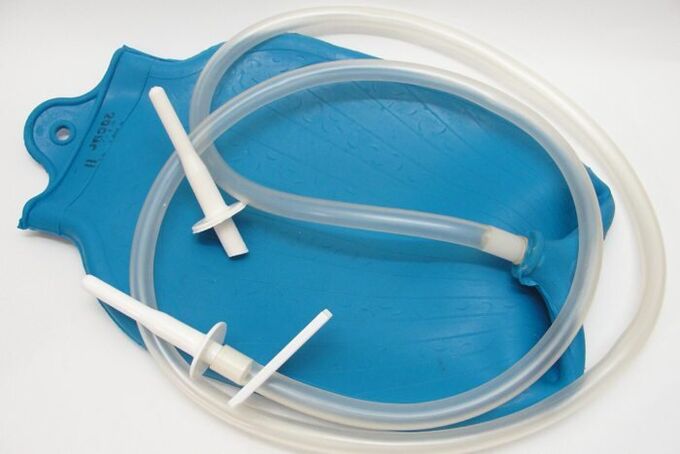
To drive out the worms, add garlic to the hot milk, pour the mixture into a bowl and plant the baby on it. The worms climb out under the influence of garlic steam. When performing such a procedure, you must be very careful not to burn the baby’s skin.
Tansy
Thanks to Tansy’s essential toxic oils, it has acquired excellent remedies for dumplings and tapeworms. It is successfully used to empty parasites from the human body. The only caveat is that successful treatment requires a large dose designed for adults. The question of whether dance can be given to children as an anthelmintic cannot be answered definitively. The drug has a fairly long side effects: nausea, vomiting, high blood pressure, seizures.
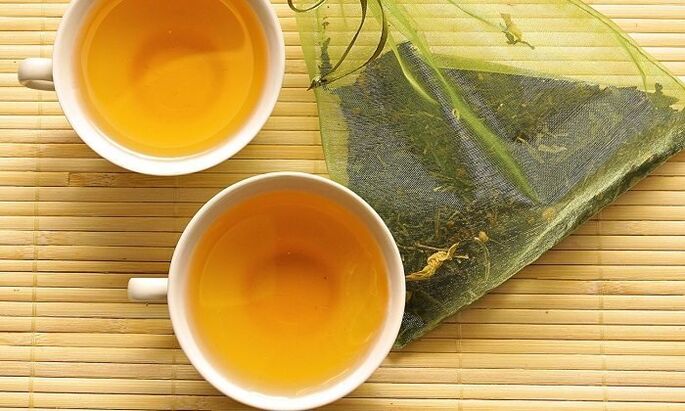
Important! Tansy decoction is only prescribed for children at least 10 years old and weighing at least 30 kg. It is dangerous for preschool children to take tansy against worms.
Pumpkin seeds
This simple tool has been known since ancient times and was used by our ancestors. Pumpkin seeds, popular with many, are an excellent cure for parasites. Instead of seeds, we can add pumpkin seed oil, which is sold in pharmacies. It should be taken half an hour before a meal. For young children who still don’t know how to eat seeds, they can cook pumpkin soup. To do this, the seeds are crushed, poured over boiling water and kept in a water bath. The resulting liquid is infused over 24 hours and filtered after drinking.
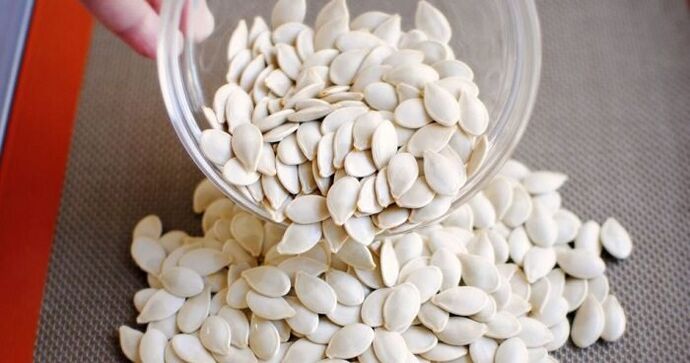
Onion
The chopped onion is poured over boiling water and fermented for 12 hours. This infusion is drunk for several days. Onions and garlic are good for regular meals.

Juices
Carrot juice is the most popular in the treatment of worms. Definitely freshly squeezed. Useful juices from beets, pomegranates and cabbage, as well as rosehip scalds. However, you need to understand that it is impossible to get rid of helminths with juices alone. Therefore, their administration on an empty stomach is considered part of a comprehensive therapy for helminths.

Natural vegetable oils
Hemp, flaxseed and cedar oil have antiparasitic properties. They are completely safe for babies. You can moisten a piece of cotton wool in oil and lubricate the child’s anus overnight. This action destroys the eggs of the dumplings that the female lays while the child is asleep.
Doctor treating worms
In his television speeches, the famous doctor notes that success in the treatment of worms can only be achieved with the help of modern medicines. The doctor strongly advises parents not to self-heal and to seek professional help in a timely manner.

In this case, it is important to determine what types of worms have attacked the baby and which medication will be most effective for it. From folk remedies, a well-known doctor advises pumpkin seeds, recommending a dose of 300 grams at a time. But gnashing teeth as a sign of a helminthic invasion is considered by the expert to be idle fiction.
Prevention of Helminthic Diseases
In order to minimize the likelihood of infection with parasites, preventive measures should be taken:
- make sure your child washes their hands as often as possible, especially before meals and after a washbasin;
- do not drink raw water;
- do not eat raw meat and fish;
- wash vegetables and fruits thoroughly;
- do not allow a child to touch stray dogs and cats by hand and regularly give anthelmintics to pets;
- wash your child's toys daily;
- cut off the short nails under which the parasites usually accumulate;
- maintain personal hygiene and cleanliness of the home;
- perform anthelmintic prophylaxis with the whole family in the fall and spring.
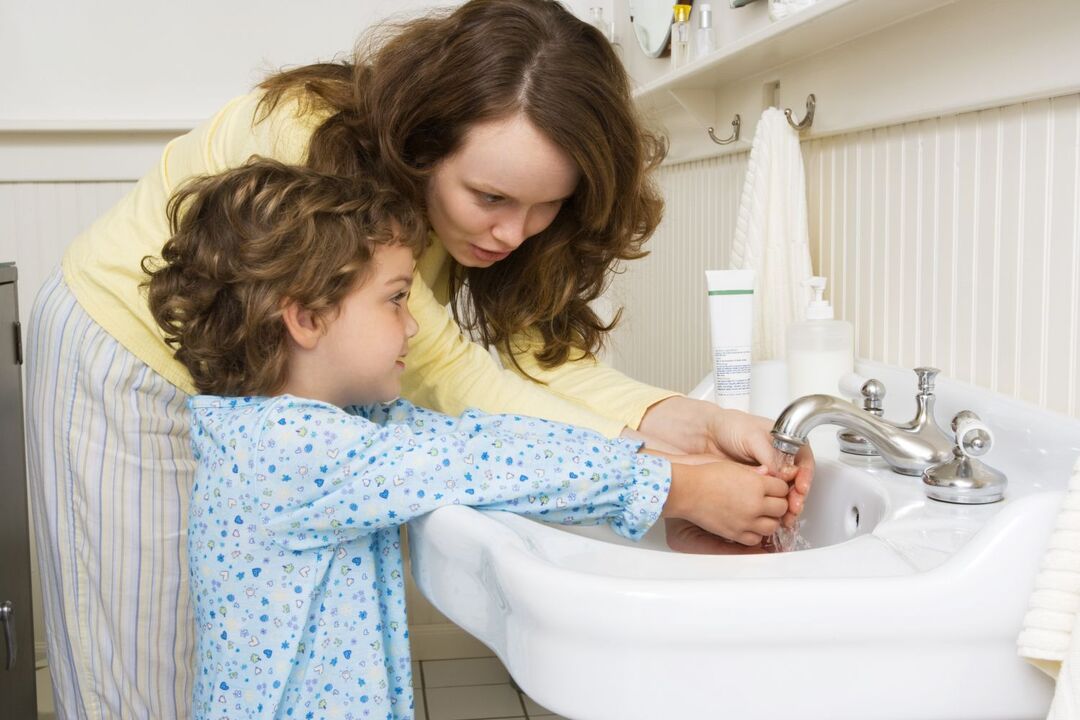
Adherence to all rules is not an absolute guarantee of protection against parasites, but it significantly reduces the risk of infection and its serious consequences.



























